
THE INCREDIBLE EGG
In an esoteric aside, we explore the mysteries of a cast-iron classic.
Maybe you knew it as “eggs in toast.” Maybe “eggs in a hole.” Maybe “eggs in a frame.” Or, perhaps, the more common refrain but still curious “toad in a hole”—or “frog in a pond.”
But whatever your family called it, at some point in your life, you have undoubtedly eaten this egg dish of many names and one simple recipe: butter in a pan, a slice of white bread, its center cut out, an egg cracked and fried inside.
But after all the generations that it’s been passed down, after all the kitchens in which it’s been cooked, and all the tables and countertops and paper napkins and laps on which it’s been eaten, the question remains: which name came first?
As is the case with most colloquialisms, spread by word-of-mouth, altered by hearsay and history, it looks like we might never know it’s true etymology. But a few things we do, predominantly from pop culture:

The lesser-known “gashouse eggs” was likely derived from the German word gasthaus, for an inn or country home. It was mentioned in the 1941 Betty Gable film, Moon Over Miami, but a few years earlier, the even-lesser-known “Guy Kibbee Egg” nickname was used, supposedly in relation to the early actor of the same name, who ate said eggs in the 1935 Mary Jane’s Pa, before going on to star in the actually-known Mr. Smith Goes to Washington.
Of course, if we had our druthers, the Oscar would go to a cameo in the 1987 cinematic cult classic, Moonstruck, starring Cher and Olympia Dukakis, who fries up a delectable-looking version with roasted red peppers and olive oil before chaos ensues with Nicholas Cage. Known as uova fritte nel pane in Italy, it’s a dish that once graced many an Italian-American plate in the first half of the 20th century.
Still, we may never know the true origin of other nom de plumes for this crispy egg sandwich of sorts, let alone the namesakes behind them, such as for the “one-eyed Jack,” or the “one-eyed Pete.” Or exactly why it would ever be called a “cowboy egg.” And whether “Rocky Mountain Toast” was dubbed in Colorado, Montana, or Wyoming. Though “bulls eye eggs” feels obvious.
To make matters even more confusing, similar terms, like “egg-in-a-basket” and “egg-in-a-nest,” are also commonly used for those baked egg-hash brown breakfast cups that consume the pages of Pinterest, while the aforementioned amphibian appellations are actually more accurately a British dish of sausages cooked in Yorkshire pudding.
And what about “egg-with-a-hat,” which appeared in Fannie Farmer’s lauded Boston Cooking School Cookbook, starting in the 1890s? Now that’s just ridiculous.
In lieu of any one true nativity story, perhaps the better question is: what’s in a name, anyways?”
Whether it’s served with white or wheat or sourdough, with its middle is cut out by a cookie cutter or biscuit cutter or whatever knife you have on hand, with yolks as bright as a canary or dark as an oriole, topped with just salt and pepper or hot sauce or Worcestershire or pimento cheese (as done by those readers in the comment section of The New York Times’ recipe), this pan-toasted-bread-with-a-fried-egg-inside could simply be known as a great unifier.
Even with dozens of names, these mystery eggs continue to comfort us across centuries and cultures. And whether they’re eaten in a city walkup or over a country sink or outside in the mountain air, they always taste like wherever we came from—like that first time we had them, all those years ago.
They might simply need no language, as all that’s really required is a hot cast-iron pan and some basic pantry staples. A spatula doesn’t hurt either.
After all, for most cooks, silence—albeit a few oohs and ahhs—is the greatest form of flattery.



